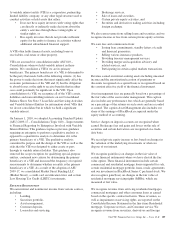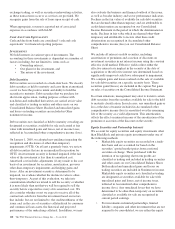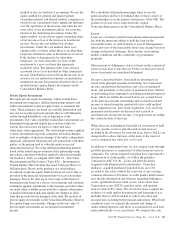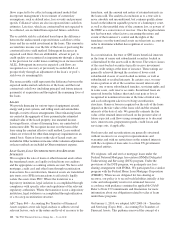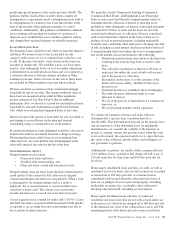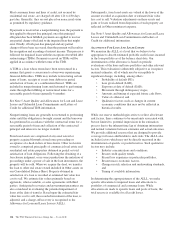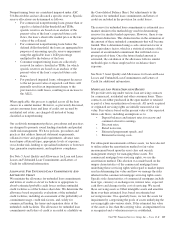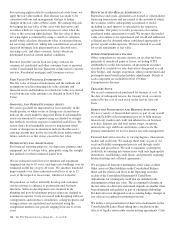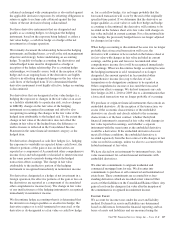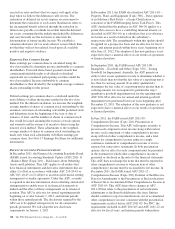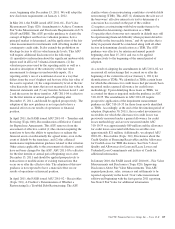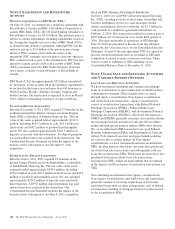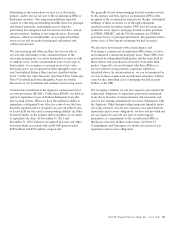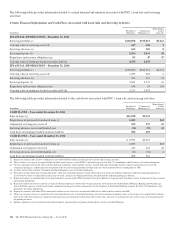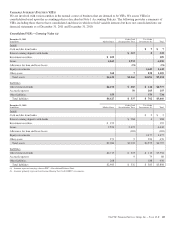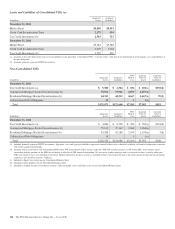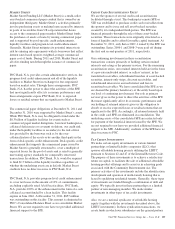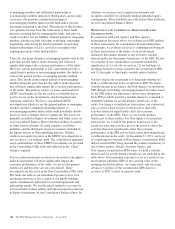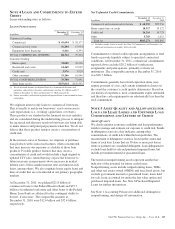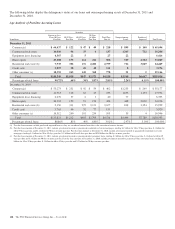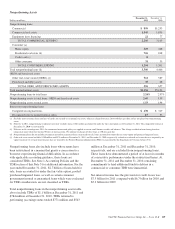PNC Bank 2011 Annual Report Download - page 128
Download and view the complete annual report
Please find page 128 of the 2011 PNC Bank annual report below. You can navigate through the pages in the report by either clicking on the pages listed below, or by using the keyword search tool below to find specific information within the annual report.years, beginning after December 15, 2011. We will adopt the
new disclosure requirements on January 1, 2012.
In May 2011, the FASB issued ASU 2011-04 - Fair Value
Measurement (Topic 820), Amendments to Achieve Common
Fair Value Measurement and Disclosure Requirements in U.S.
GAAP and IFRS. This ASU provides guidance to clarify the
concept of highest and best use valuation premise, how a
principal market is determined, and the application of the fair
value measurement for instruments with offsetting market or
counterparty credit risks. It also extends the prohibition on
blockage factors to all fair value hierarchy levels. This ASU
will require additional disclosures for the following:
(1) quantitative information about the significant unobservable
inputs used in all Level 3 financial instruments, (2) the
valuation processes used by the reporting entity as well as a
narrative description of the sensitivity of the fair value
measurement to changes in unobservable inputs, (3) a
reporting entity’s use of a nonfinancial asset in a way that
differs from the asset’s highest and best use if the fair value of
the asset is reported, (4) the categorization by level of the fair
value hierarchy for items that are not measured at fair value in
financial statements and (5) any transfers between Level 1 and
2 and the reason for those transfers. ASU 2011-04 is effective
for the first interim or annual period beginning after
December 15, 2011, and should be applied prospectively. The
adoption of this new guidance is not expected to have a
material effect on our results of operations or financial
position.
In April 2011, the FASB issued ASU 2011-03 – Transfers and
Servicing (Topic 860), Reconsideration of Effective Control
for Repurchase Agreements. This ASU removes from the
assessment of effective control (1) the criterion requiring the
transferor to have the ability to repurchase or redeem the
financial assets on substantially the agreed terms, even in the
event of default by the transferee, and (2) the collateral
maintenance implementation guidance related to that criterion.
Other criteria applicable to the assessment of effective control
have not been changed by this ASU. ASU 2011-03 is effective
for the first interim or annual period beginning on or after
December 15, 2011 and should be applied prospectively to
transactions or modifications of existing transactions that
occur on or after the effective date. The adoption of this new
guidance is not expected to have a material effect on our
results of operations or financial position.
In April 2011, the FASB issued ASU 2011-02 – Receivables
(Topic 310), A Creditor’s Determination of Whether a
Restructuring Is a Troubled Debt Restructuring. The ASU
clarifies when a loan restructuring constitutes a troubled debt
restructuring (TDR). This ASU (1) eliminates the sole use of
the borrowers’ effective interest rate test to determine if a
concession has occurred on the part of the creditor,
(2) requires a restructuring with below market terms to be
considered in determining classification as a TDR,
(3) specifies that a borrower not currently in default may still
be experiencing financial difficulty when payment default is
“probable in the foreseeable future,” and (4) specifies that a
delay in payment should be considered along with all other
factors in determining classification as a TDR. The ASU
guidance was effective for interim and annual periods
beginning after June 15, 2011 and was to be applied
retrospectively to the beginning of the annual period of
adoption.
As a result of adopting the amendments in ASU 2011-02, we
reassessed all restructurings that occurred on or after the
beginning of the current fiscal year (January 1, 2011) for
identification as TDRs. We identified as TDRs certain loans
for which the allowance for credit losses had previously been
measured under a general allowance for credit losses
methodology. Upon identifying those loans as TDRs, we
accounted for them as impaired under the guidance in ASC
310-10-35. The amendments in ASU 2011-02 require
prospective application of the impairment measurement
guidance in ASC 310-10-35 for those loans newly identified
as TDRs. Accordingly, at the end of the first interim period of
adoption (September 30, 2011), the recorded investment in
receivables for which the allowance for credit losses was
previously measured under a general allowance for credit
losses methodology and are now measured under ASC
310-10-35 was approximately $69 million and the allowance
for credit losses associated with those receivables was
approximately $21 million.Additionally, we adopted ASU
2010-20 – Receivables (Topic 310), Disclosures about the
Credit Quality of Financing Receivables and the Allowance
for Credit Losses for TDR disclosures. See Note 5 Asset
Quality and Allowances for Loan and Lease Losses and
Unfunded Loan Commitments and Letters of Credit for
additional information.
In January 2010, the FASB issued ASU 2010-06 – Fair Value
Measurements and Disclosures (Topic 820), Improving
Disclosures About Fair Value Measurements. This ASU
required purchases, sales, issuances and settlements to be
reported separately in the Level 3 fair value measurement
rollforward beginning with the first quarter 2011 reporting.
See Note 8 Fair Value for additional information.
The PNC Financial Services Group, Inc. – Form 10-K 119


